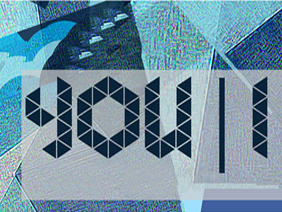Featured Artists & Works
Station 1: "Remembering the Dead" by John Barber (2016)
Link to Artist's Website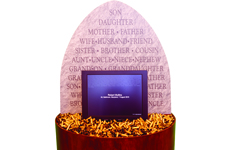
"Remembering the Dead" is a sound art work that memorializes people killed in gun homicides in America in 2015. The memorial is both physical and virtual. The physical work consists of a kiosk, representative of both a bullet and a tombstone. A dedicated website provides a virtual memorial. In both, the name, age, place of death, and date of death of each victim is displayed on a monitor. Concurrently, using text-to-speech technology, the name of each victim is spoken. After its display, the name of each victim is added to a memorial list in the background. Another name is displayed and spoken. The process continues, eternally. With each name displayed, the list grows longer. With each name spoken, we are reminded of the human cost of this violence. "Remembering the Dead" is designed as an act of remembrance, focused on the act of listening, evoked in/by a temporary autonomous zone, defined and expressed through sound, technology, and culture. In this temporary space, permanence is sought through hearing and reflection. The intent is to honor the victims, affirm their humanity, and assure their memories will not fade from active memory.
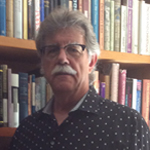
John F. Barber teaches in the Creative Media & Digital Culture program at Washington State University Vancouver, Vancouver, Washington, USA. His radio+sound art work has been broadcast internationally, and featured in juried exhibitions in America, Canada, Germany, Portugal, Macedonia, and Northern Ireland. He developed and maintains Radio Nouspace, a curated listening gallery/virtual museum for sound as the basis for narrative and storytelling.
Station 2: "If These Walls Could Speak" by Matthew Mosher (2011)
Link to Artist's Website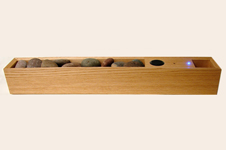
"If These Walls Could Speak" provides an alternative memory storage system using tangible objects as a diary. Using river rocks as tokens, a user can listen to past audio stories stored in the stones, or record new ones. There is a rock storage basin on the left and a reader compartment on the right. When a stone is placed in the reader the shelf plays the story associated with that rock. If the stone is not associated with a memory yet it asks the viewer to tell it a story of theirs, which it records into the stone.

Boston native Matthew Mosher is an intermedia artist and mixed methods research professor who creates public installations, interactive performances, and experiential systems. He received his BFA in Furniture Design from the Rhode Island School of Design and his MFA in Intermedia from Arizona State University. While in Phoenix, Arizona he co-founded the [nueBOX] residency program for emerging performance and installation artists. Currently, he is an assistant professor of digital media at the University of Central Florida. His work has been exhibited across the United States and internationally in India, China, and the Netherlands.
Station 3: "Vniverse" by Stephanie Strickland and Ian Hatcher (2014)
Link to Artists' Website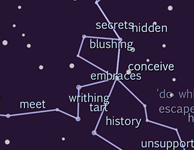
"Vniverse" is a poetry instrument you can play. Draw constellations of stars and words, follow tercets aligned with the stars, and consult the mysterious Oracle. This app accompanies and complements a print book by Stephanie Strickland, V: WaveTercets / Losing L'una, published by SpringGun Press in 2014. It was developed by Ian Hatcher, in collaboration with Stephanie Strickland. For more information, and to view the Shockwave version of "Vniverse" created by Strickland and Cynthia Lawson Jaramillo in 2002, visit vniverse.com.
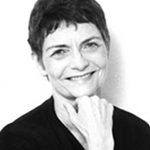
Stephanie Strickland is a poet and born-digital writer whose works range from paper to interactive websites. She also teaches and serves on the board of the Electronic Literature Organization. Her papers include journals and anthologies featuring Strickland's poetry; TechnoPoetry Festival materials; schoolwork, college, and graduate papers; posters and programs from events; proofs and drafts of her writings; and audio recordings.
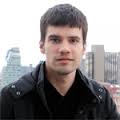
Ian Hatcher is a text/sound/performance artist and programmer whose work explores cognition in context of digital systems. He is the author of a print book, Prosthesis (Poor Claudia 2016), two chapbooks, Private (Inpatient 2016) and The All-New (Anomalous 2015), and numerous screen-based texts, including the NEA-supported app/book Abra (with Amaranth Borsuk and Kate Durbin). His code-inflected vocal performances have been presented widely in North America and Europe. He lives in Brooklyn.
Station 4: "How to Rob a Bank" by Alan Bigelow (2016)
Link to Artist's Website
"How to Rob a Bank" is the first in a narrative series about a young man's attempted cash score by way of Google searches. The story is told using a series of screenshots and animations from the protagonist's iPhone as he uses Google searches, Wikipedia pages, social networks, apps, and websites to achieve his goal. The work is built in HTML5, CSS, and Javascript. It is playable on desktops, laptops, and portable devices. The URL of work can be found at http://www.webyarns.com/howto/howto.html

Alan Bigelow's work, installations, and conversations concerning digital fiction and poetry have appeared in the Library of Congress (USA), SFMOMA, La Bibliothèque Nationale de France (Paris), Turbulence.org, Rhizome.org, The National Art Center (Tokyo), Los Angeles Center for Digital Arts, FreeWaves.org, Art Tech Media, FILE, Blackbird, Drunken Boat, IDEAS, New River Journal, and many other places worldwide. He is currently a Professor of Humanities at Medaille College in Buffalo, New York, USA. You can see his work at http://www.webyarns.com
Station 5: "La Séparation" by Serge Bouchardon, Pièrre Fourny, and Hélène Caubel (2015)
Link to Artists' Website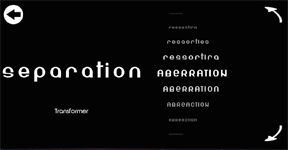
"La Séparation" builds on an artistic practice invented by Pièrre Fourny, entitled Two Half-Words Poetry (or Cutting-edge Poetry...). This particular practice makes it possible to create sequences based on the idea that words which are halved horizontally, contain the half of other words. In the application for PC, tablets and smartphones, the users can experience Cutting-edge Poetry in two ways. They can play with poems (in the “Salon” section), but they are also able (in the “Lab” and “Editor” sections) to play with their own words and texts. A software program returns results dynamically for any word. They can compose their own texts and share them.

Serge Bouchardon is currently Professor in Communication Sciences at Sorbonne University, Université de technologie de Compiègne (France). His research focuses on digital creation, in particular digital literature. As an author, he is interested in the the way gestures can contribute to the construction of meaning. His creations were exhibited in several venues in Europe and America. The creation Loss of Grasp (http://lossofgrasp.com/) won the New Media Writing Prize 2011. Research: http://www.utc.fr/~bouchard/. Creation: http://www.sergebouchardon.com/
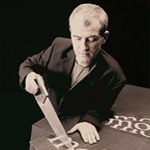
Pièrre Fourny is an actor and director, founder of the ALIS company. He invented La Poésie à 2 mi-mots (Cutting-edge Poetry), an artistic practice based on special games with the shapes of letters. Pierre Fourny cuts words horizontally, peels them, reverses them, etc. He shows words emerging from other words. Given that the human brain cannot devote itself to such a graphic and linguistic computational exercise, Pierre Fourny created a software to do so. Cutting-edge Poetry has inspired many shows, exhibitions, films, books produced by ALIS and its partners.
Station 6: "Lexia to Perplexia" by Talan Memmott (2000)
Link to Artist's Website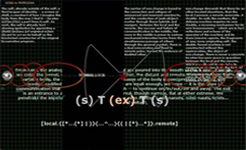
"Lexia to Perplexia" explores new terms for the processes and phenomena of network attachment as they were in 2000. The interface is designed as a diagrammatic metaphor, emphasizing the local and remote poles of network attachment while exploring the hidden spaces of the process. Interactive features are integrated into the rhetorical and theoretical content of the work. In essence, the text does what it says: in that, certain theoretical attributes are not displayed as text but are incorporated into the functionality of the work.
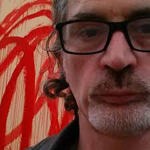
Talan Memmott is a digital writer/artist/theorist. Memmott has taught and been a researcher at UC Santa Cruz; University of Bergen (Norway); Blekinge Institute of Technology (Sweden); CSU Monterey Bay; Georgia Institute of Technology; University of Colorado Boulder; and the Rhode Island School of Design. He holds an MFA in Literary Arts/Electronic Writing from Brown University and a PhD in Interaction Design/Digital Rhetoric and Poetics from Malmö University. He was a co-editor for the Electronic Literature Collection, Volume 2 (ELO), and the ELMCIP Anthology of European Electronic Literature, and is a Director for the Electronic Literature Organization. He is currently teaching at Winona State University.
Station 7: "Loss Sets" by Aaron Tucker, Jordan Scott, Tiffany Cheung and Namir Ahmed (2016)
Link to Artists' Website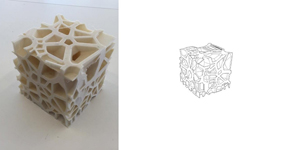
"Loss Sets" translates poems co-written by Jordan Scott and Aaron Tucker into sculptures. The poems are originally generated under the theme of “loss” in order to resist and/or examine the often utopian impulses around 3D printing “replacing” any object or landscape, especially as increased technologization relates to the natural world. The poems are first turned into coordinates along the X,Y and Z axes, after which those points are imported into the 3D modeling software Rhino. The pieces are further manipulated using the latitude, longitude, and spot height from the Columbia Icefields. All this data is combined and a sculpture is “carved away” from a 6 inch cube then printed using a Lulzbot TAZ 3D printer.

Aaron Tucker is the author of Interfacing with the Internet in Popular Cinema and punchlines, as well as being the co-creator of the ChessBard (chesspoetry.com), an app that translates chess games into poems (chesspoetry.com). He is currently a lecturer in the English Department at Ryerson University, Toronto, Canada.

Jordan Scott is the author of Silt, blert (2008) and Decomp (written with Stephen Collis). blert was adapted into a short film for Bravo! and was the subject of an on-line interactive documentary commissioned by the National Film Board of Canada. Scott recently concluded his stint as the Writer in Residence at Simon Fraser University.

Tiffany Cheung is a Masters of Architecture student at Ryerson University with an undergraduate degree in Architectural Science. She was awarded the Phylis Yaffe Innovation Student Scholar in 2014 and is currently working part-time in Ryerson University's Library.

Namir Ahmed is the diector of the Digital Media Experience Lab at Ryerson University and is a veteran of two industries, Digital Media and Archaeology, with an Hon. BA in Anthropology from York University and a Post-Grad Diploma in Digital Technical Production from Seneca College.
Station 8: "The Ice-Bound Concordance" by Aaron Reed and Jacob Garbe (2014)
Link to Artists' Website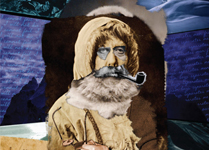
"The Ice-Bound Concordance" is an award-winning interactive narrative game where a shifting digital text comes into dialogue with a physical, printed art book. A combinatorial story system enables the player to explore thousands of permutations of a long-dead novelist's final work, while carrying on a discussion with his digital ghost. Using augmented reality, the game can recognize pages from the printed book, projecting more layers of the author's past but also changing the direction of the digital story.
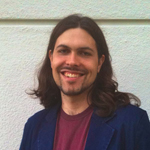
Aaron A. Reed has been creating groundbreaking interactive stories for over a decade, focusing on finding new ways for authors and players to collaborate. A published fiction writer and award-winning game designer, Aaron's work has been featured at IndieCade, GDC, South by Southwest, Slamdance, GaymerX, and PAX East. Aaron holds a PhD in Computer Science and a MFA in Digital Arts and New Media.

Jacob Garbe is a game designer and new media artist currently pursuing his PhD at UCSC's Expressive Intelligence Studio. His interests lie in the application of intelligent systems to narrative design to facilitate new forms of storytelling and interactivity. His work has been featured at IndieCade, IGF, and the ZERO1 Biennial.
Station 9: "Whispering Galleries" by Amaranth Borsuk and Brad Bouse (2013)
Link to Artists' Website
"Whispering Galleries" is an interactive digital artwork that uses the Leap Motion gestural controller to allow visitors to interact with a historical diary. The project takes as its central metaphor the architectural whispering gallery, a domed space whose unique shape carries even the quietest sounds from one end of the room to another with utmost clarity, allowing visitors to communicate in whispers across a great distance. Our whispering gallery delivers messages across the vast distance of time—helping a voice that would otherwise be lost to history find its way to a contemporary audience.
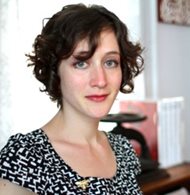
Amaranth Borsuk Ph.D. is a scholar and published poet whose work focuses on textual materiality – from the surface of the page to the surface of language. She currently writes a Jacket2 Commentary on the artist‘s book in the digital age and tweets for The Deletionist, an erasure applet collaboration with Nick Montfort and Jesper Juul. She is the author of the book of poems, Handiwork, selected by Paul Hoover for the 2011 Slope Editions Poetry Prize (Slope Editions, 2012); and a chapbook, Tonal Saw (The Song Cave, 2010). She is the 2011 recipient of the Gulf Coast Poetry Prize for "A New Vessel," selected by Ilya Kaminsky, and her poems, essays and reviews have appeared widely in print and online. Amaranth holds a Ph.D. in Literature and Creative Writing from the University of Southern California, and recently served as Mellon Postdoctoral Fellow in the Humanities at MIT. She currently teaches in Interdisciplinary Arts and Sciences in the MFA in Creative Writing and Poetics at the University of Washington, Bothell.

Brad Bouse is a developer interested in the creative applications of code. He has a degree in film production from the University of Southern California and began his career working in visual effects. He has given several talks about creative code, recently including Cascadia JS (Watch!), the Northwest’s largest JavaScript conference. His open source art projects include Solving Sol, which facilitates programmatically rendering Sol LeWitt’s wall drawings, and Facets.js, a generative polygonal library. Bouse designed and built the family tree interface for Geni and the original desktop app for Yammer. Currently, Brad runs an interactive design consulting service that advises early-stage web startups.
